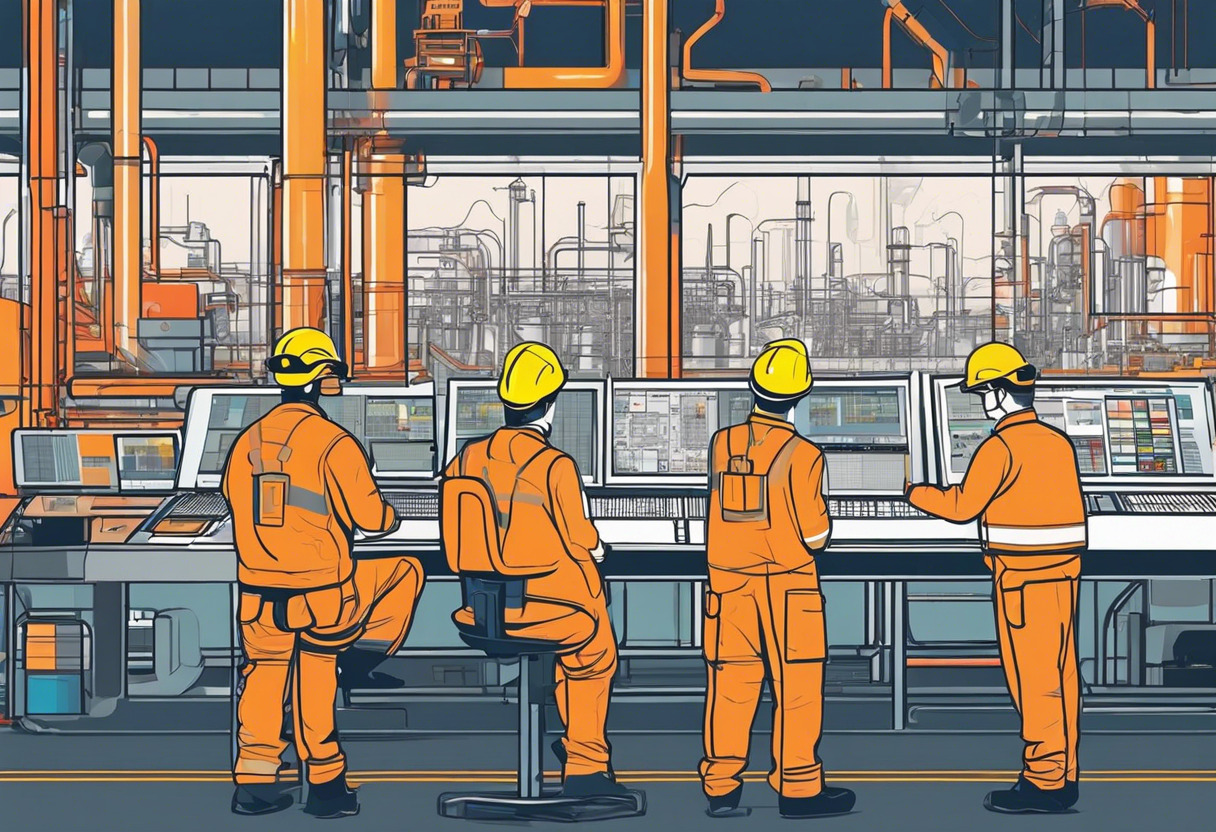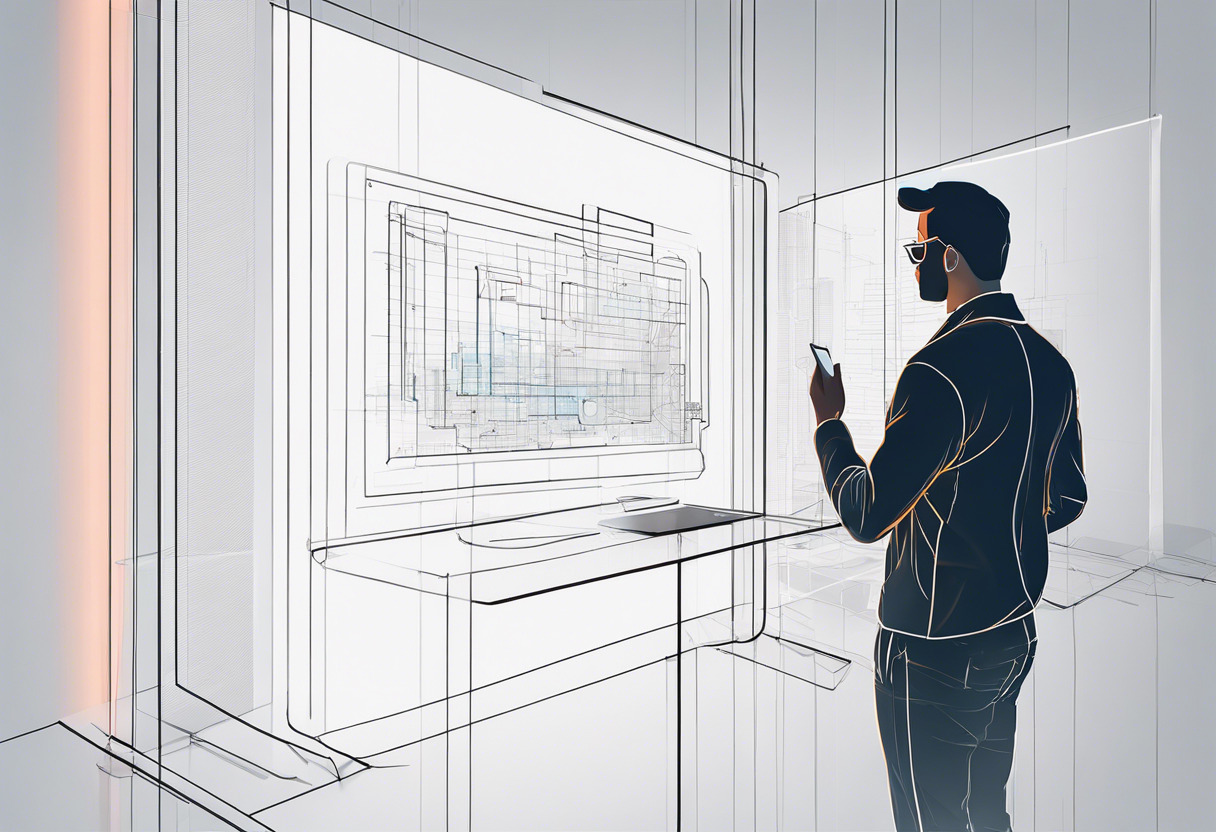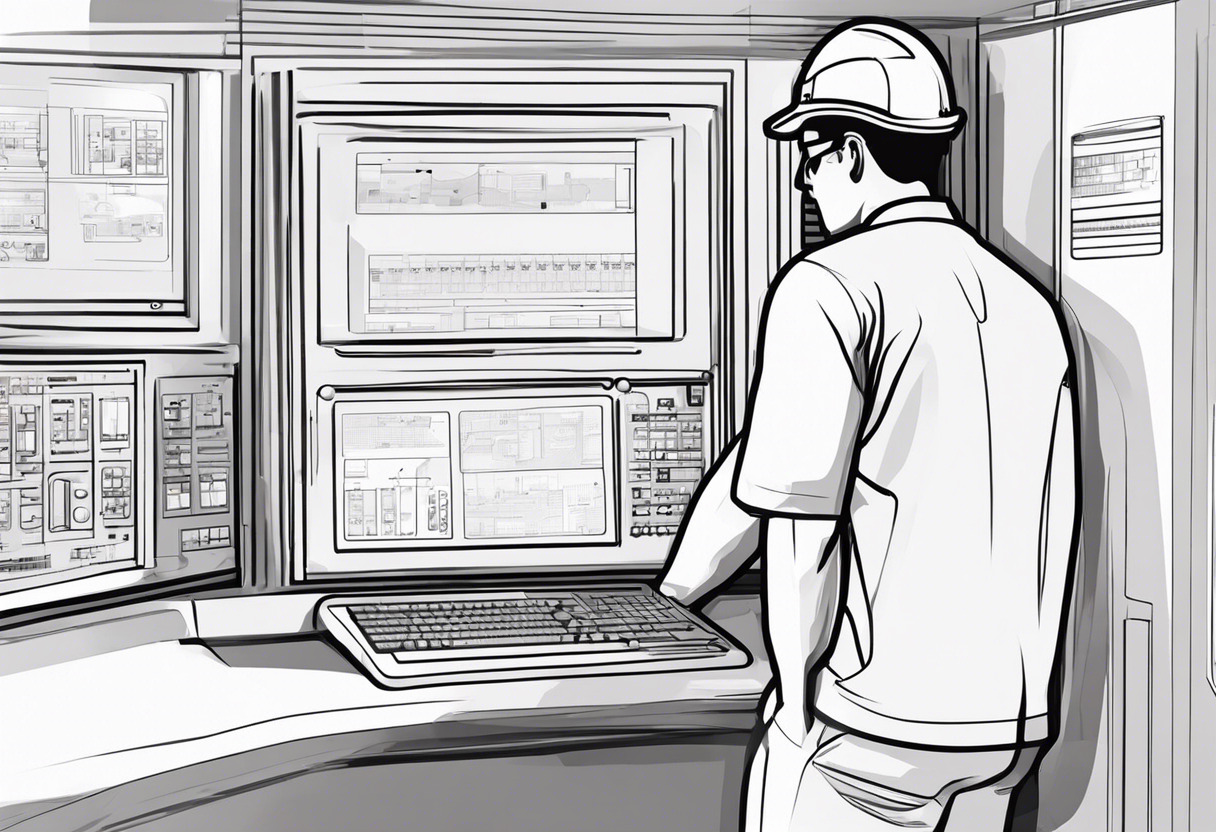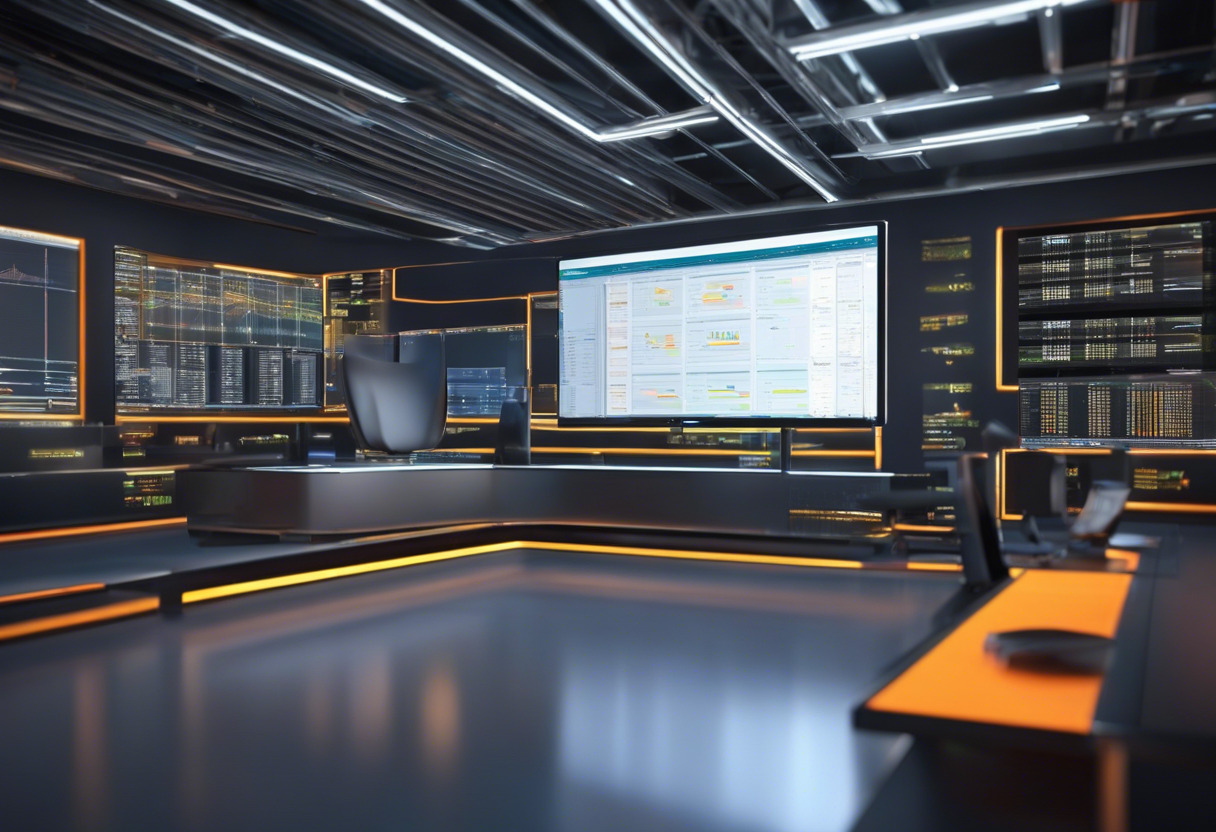For businesses engaged in the industrial sector, the choice between HMI vs MES largely boils down to the need for interaction and monitoring or transformation and control. HMIs dominate in providing real-time interaction, visualization, and monitoring of industrial processes, while MES excel in transforming raw materials into finished products while optimizing processes and improving traceability, especially for those observing strict compliance regulatory standards.

Key Differences Between HMI and MES
- Coding: HMI prioritize user interaction through data visualization and monitoring, while MES focus on documentation and transformation processes.
- Applications: HMIs are extensively used in sectors such as energy, food and beverage, manufacturing, water/waste management, while MES are essential for industries requiring stringent compliance like pharmaceuticals.
- Integration: HMI mostly interfaces with PLCs and input/output sensors, whereas MES are often integrated with ERP, PLM, CMMS, WMS, HRMS systems.
- Cost: Implementation of HMI may vary greatly, while MES implementation can range from $375,000 to $1.2 million.
| Comparison | HMI (Human-Machine Interface) | MES (Manufacturing Execution Systems) |
|---|---|---|
| Usage | Industrial arenas, monitoring and control of machinery and processes | Tracking and documenting the transformation of raw materials into finished goods |
| Functionalities | Data display, trend tracking, monitoring KPIs, inputs/outputs | Product lifecycle management, resource scheduling, order execution, production analysis, downtime management, product quality tracking |
| Mobile Capabilities | Support for touch-screen HMIs and mobile HMIs for remote monitoring | Data accessible via MES software |
| Industries | Energy, food and beverage, manufacturing, oil and gas, power, recycling, transportation, water/wastewater | Industries requiring transformation of raw materials into finished goods |
| Future Outlook | Evolving with modern technologies, expected to transform towards visibility and mobility | Evolving with modern technologies; global market growth projected with revenue of $18.06 billion by 2025 |
| Automated Functions | Dependant on PLCs and I/O sensors for operation and data acquisition | Able to automate workflows, scheduling, equipment assignment, alert system and process plan updates |
What Is HMI/SCADA and Who’s It For?
The Human-Machine Interface (HMI) / Supervisory Control and Data Acquisition (SCADA) is a pioneering system that effectively integrates the interaction and control of industrial operations across various sectors. With an emphasis on key roles including operators, control system engineers, and system integrators, it redefines the way we interpret and manipulate machinery and processes.
From managing the temperature of an industrial water tank to dictating the functions in power generation setups, the HMI/SCADA system becomes an indispensable part of the modern industrial scenario. In demand within industries like energy, transportation, and recycling, its far-reaching applications underscore its crucial role in operations management.

Pros of HMI/SCADA
- Improves operational efficiency by quickening developmental pace and alarm resolution
- Promotes centralized data access, enhanced remote monitoring, and control
- Offers critical decision-making support in machinery operations
- Integrates with Data Historians for insightful trend and analysis
- Facilitates mobile HMI for instant remote data access
Cons of HMI/SCADA
- Requires cultural shift and upskilling amongst employees for optimal utilization
- Integration with other technologies can be complex
- Security concerns exist for cloud-based and remote data access
- Costly to implement and maintain
- Dependent on the stability of internet connections
What Is Manufacturing Execution Systems (MES) and Who’s It For?
Manufacturing Execution Systems (MES) are computerized systems designed to oversee and document manufacturing operations. From the transformation of raw materials to finalized products, the real-time data it provides serves as an catalyst for intensive quality control, inventory reduction, and boosted production outputs.
It is highly leveraged in regulated industries such as pharmaceuticals, food, and beverages, where tracing manufacturing operations is critical. MES converges functionality with Enterprise Resource Planning (ERP) and Supervisory Control and Data Acquisition (SCADA) systems to form an integral facet of the manufacturing landscape.

Pros of Manufacturing Execution Systems (MES)
- Real-time tracking of inventory levels, resources used, and order status
- Enables predictive maintenance, efficient resource scheduling, and downtime management
- Integrates with other systems for comprehensive manufacturing management
- Improved traceability and quality control for regulatory compliance
- Facilitates automation of production processes for increased efficiency
Cons of Manufacturing Execution Systems (MES)
- High cost of implementation ranging from $375,000 – $1.2 million
- Requires technical expertise for operation and maintenance
- Custom-built solutions may lack integration with existing IT infrastructures
- Depends on strong internet connectivity for optimum functionality
- Automated systems might lead to job loss
Final Analysis: HMI or MES – What’s Your Bet?
In a rapidly evolving tech world, the pivotal dilemma hinges between HMI and MES. Based on data, here’s our hot take:
Tech Enthusiasts & AR/VR Creators
For tech auteurs in pursuit of revolutionary interfaces keen on AR/VR tech, HMI provides a fertile playground. From dashboards to sophisticated operations, HMI is blossoming into high-performance touch screens and mobile devices, adapting AR and VR for enhanced industrial visualization.

System Integrators & Industrial Control Engineers
Those managing systems integration or designing process controls would favor HMI. Offering a real-time control panel, HMI accelerates decision-making, optimizes monitoring, and centralizes data control, ideal for real-time industrial operations.

Manufacturing Executives & Quality Control Supervisors
MES is the choice du jour for executives overseeing manufacturing processes and enforcing quality standards. Offering operational transparency, MES bridges ERP and SCADA, effectively tracking raw materials to finished goods, ensuring regulatory compliance, reducing waste, and improving decision-making.

Whether to use HMI or MES hinges on your role and needs. For an interactive, evolving user interface engineered towards visualization and control, HMI is key. If it’s real-time tracking, manufacturing control and oversight you seek, MES triumphs. Make the call based on your goals, and watch transformative results unfold.
Grant Sullivan
Content writer @ Aircada and self proclaimed board game strategist by day, AI developer by night.





